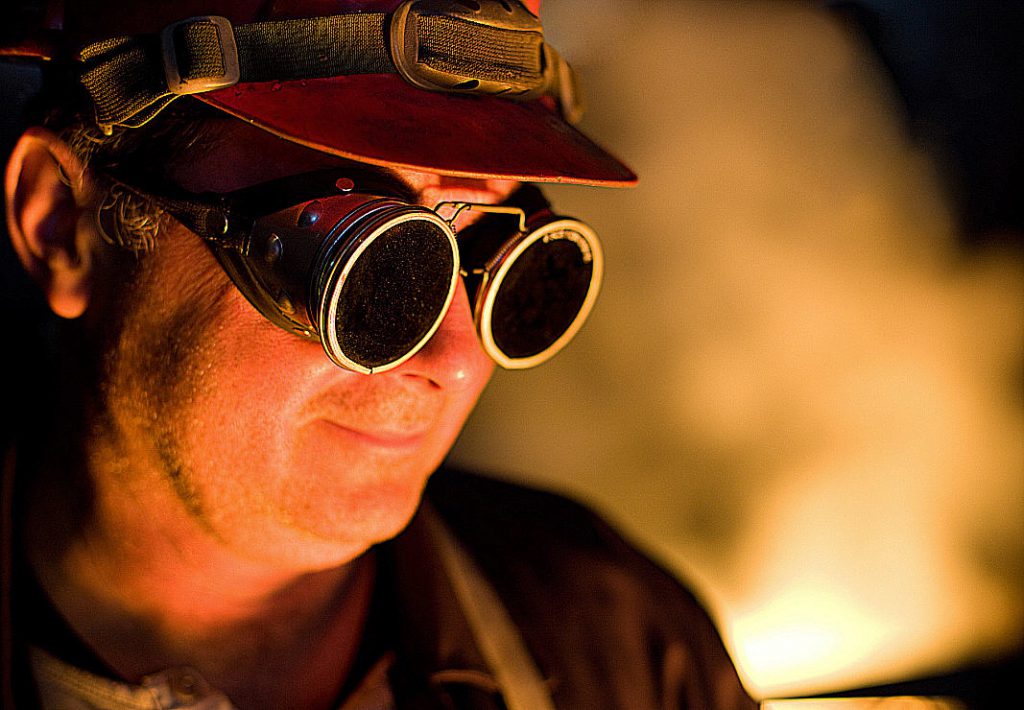The View from England: Fuse lit for American ironworkers

Guy Fawkes (1570–1606) was the leading member of a group of English Catholics who plotted to blow up parliament (and King James I) to restore a Catholic monarch to the British throne. On the anniversary of Fawkes’ arrest, his effigy is traditionally burned, accompanied by fireworks.
Explosions of a different kind were detonating in the U.S. House of Representatives when Democrats set aside divisions between progressives and centrists to pass a huge package of improvements in the country’s broadband, highways, bridges and other infrastructure. The 228-206 vote is a substantial triumph for President Biden, whose administration will now oversee the biggest upgrade of America’s transportation infrastructure in a generation. In a statement, the President said “Generations from now, people will look back and know this is when America won the economic competition for the 21st Century.”
The vote is likely to increase consumption of iron in the U.S., and comes at an auspicious time of the year for ironworkers, who, unusually, are protected by two saints.
Two Saints, a Pope and an Emperor
Saint Clement (35–99), whose feast day is November 23, was the third Pope (88–97), and might have known Saint Peter (traditionally considered the first Bishop of Rome, and thought to have been crucified by Emperor Nero in 65). Clement is also author of the oldest document in Christianity (a letter to the Corinthians) after the sacred scriptures themselves. (For centuries only a mutilated copy of this epistle was known, but in 875 a perfect copy was found at Constantinople.)
Saint Clement was exiled by the Romans to the Crimea, where he was condemned to work in the marble quarries. He was subsequently martyred by being thrown into the Black Sea with an anchor tied round his neck — hence the perhaps unfortunate link with ironworkers (he is also the patron saint of mariners).
A less well known patron saint of ironworkers is Eligius (588–659), who is also the patron saint of goldsmiths*, coin collectors, horses, veterinarians, and the Royal Electrical and Mechanical Engineers (a corps of the British Army).
* Goldsmiths in England instead adopted a former Abbot of Glastonbury and Bishop of London, Dunstan (909–988), as their patron saint.
Eligius (feast day December 1) had trained to be a goldsmith, but his craftsmanship (and famed honesty) saw him become an advisor to Dagobert I (king of the Franks; 629–634). On the king’s death, Eligius was appointed Bishop of Noyon-Tournai, where he worked for 20 years to convert the pagan population of Flanders to Christianity.
Whether prayer helped, or not, American ironworkers needed the new legislation as the country has been consuming far less iron per capita than the global average.
According to the Minerals Education Coalition, the average American born in 2021 will each need almost 3.0 million pounds of minerals, metals and fuels in their lifetime (1,340 tonnes).
Although a lot by global standards, the overall amount is down 7.2% on the calculated lifetime consumption of last year’s American babies, and the iron ore contribution is only 17,068 pounds. (Note also that, year-on-year, the estimated lifetime consumption of coal for American new-borns is down 21% at 223,973 pounds.)
If we take the average life-expectancy of an American born this year as 78, and the global population as 7.9 billion, then the world’s annual consumption of iron ore would be only 784 million tonnes if we all consumed at the same average rate as this year’s American babies. Mined annual production of iron ore (62% Fe) is some 2,300 million tonnes, which means the U.S. has been using far less iron ore per capita than the rest of the world.
President Biden’s fireworks on Guy Fawkes Night have illuminated this shortfall; Clement and Eligius will be pleased.
— Dr. Chris Hinde is a mining engineer and the director of Pick and Pen Ltd., a U.K.-based consulting firm he set up in 2018 specializing in mining industry trends. He previously worked for S&P Global Market Intelligence’s Metals and Mining division.
(This article first appeared in The Northern Miner)




